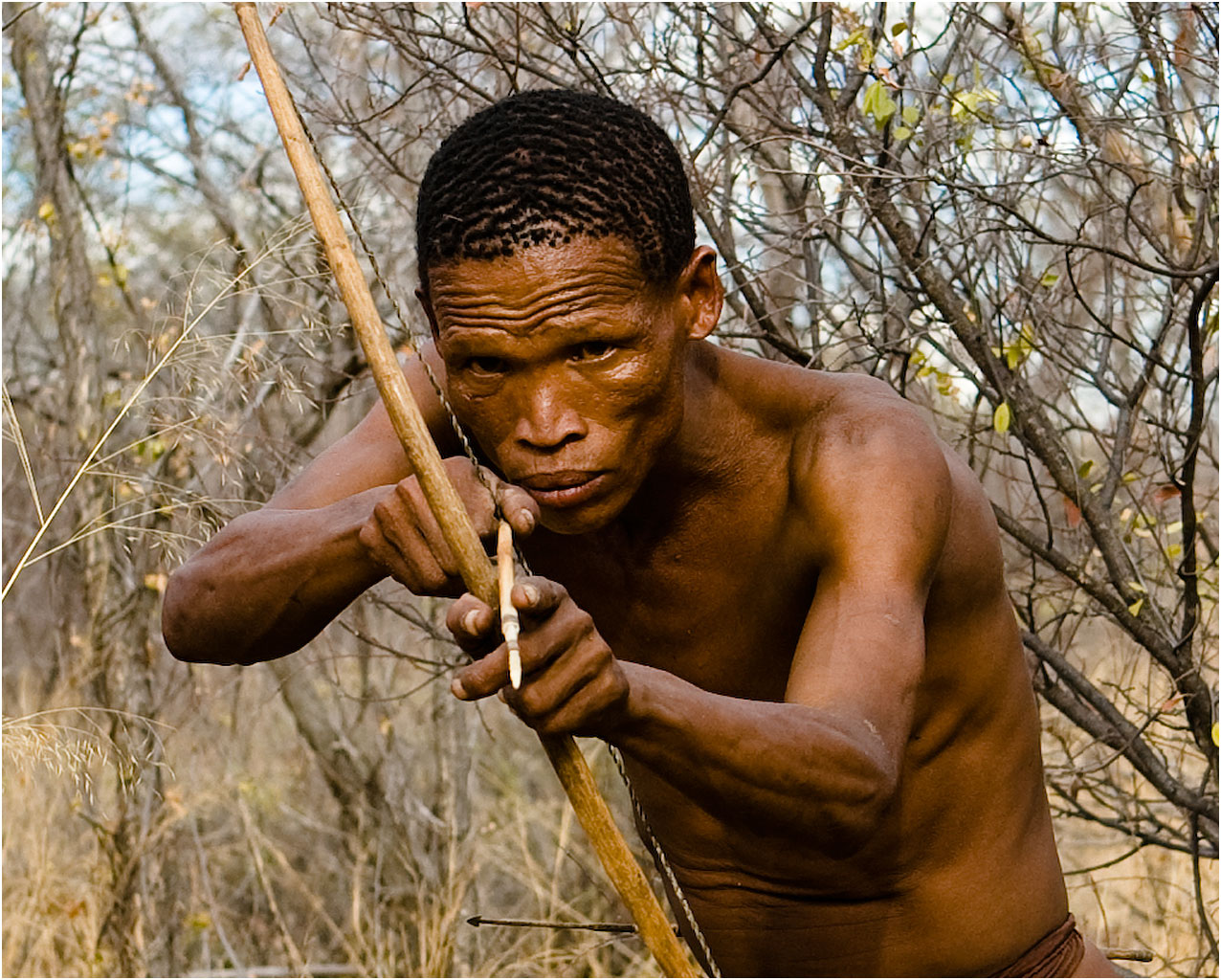Background:
San (Bushmen) – Southern Africa’s earliest inhabitants were the San, a nomadic people organized in extended family groups who could adapt to even the severest terrain. San communities later came under pressure from Nama groups. The Nama were a tribal people who raised livestock rather than hunted, and who were among the first pottery makers in the archaeological record books. They came from the south, gradually displacing the San, and remained in control of Southern Namibia until around 1500 AD. Descendants of the Nama and San people still live in the country, but few have retained their original lifestyles. The Bushmen make up only 3% of Namibia’s population.
Location – The Nyae Nyae Conservancy, established officially in February 1998, was the first in Namibia. At 9,003 square kilometers; the Conservancy has 752 members and is overseen by a conservancy committee. The Conservancy’s founding has given the Ju|’hoansi greater control over what happens in their area. It has also served to instil in them new confidence and to encourage new investment and entrepreneurial activities.
The Physical Environment
Geography – The Namibian landscape consists primarily of central highlands, of which the highest point is the Brandberg Mountain at 2,606 meters. The central plateau runs from north to south, bordered by the Namib Desert and its coastal plains to the west, the Orange River to the south, and the Kalahari Desert to the east.The average altitude of the NW Kalahari desert is 1,000 meters above sea level.
Climate – Predominately a desert region, Namibia has clear and windy weather. The area we will be visiting has a dry season from April to late October.
Flora – The North Eastern area that we shall visit is predominately tree dotted bush- land, grassland and semi-arid scrub savannah.
Fauna – We will not be visiting any game parks, and the whole course will be conducted in unprotected bush-land or unfenced farmland. These areas are home to numerous antelopes, carnivores and reptiles.
Accommodation:
The first night of the expedition will be spent at the Out of Africa guesthouse in Otjiwarongo . Allowing time to recuperate from the flight, cover the initial safety briefs, have a beer, eat and relax.
The next four nights will be spent under the stars in lightweight tents camping in the bush.
Night six will be in rooms at Roy’s Rest Camp.
The final night will be in Chameleon, a relaxing guesthouse in Windhoek, with an evening meal at the famous Joe’s Beer-house.
Meals:
All of the food on the expedition will be cooked outdoors over an open fire, as the favorite way of preparing meals in Namibia is on the braai (barbecue).
Namibians are not particularly adventurous when it comes to their food; meat is pretty much the standard, however there is a post-colonial German influence on the food available. Vegetables are not popular amongst the majority of Namibians, and are viewed as the poison of the cultural imperialists. Vegetarians can be catered for, but please bare in mind that the choice of vegetables will be limited. Tinned fish will be made available as an alternative to meat.
Spending money: The Namibian dollar (N$) is only available in Namibia – you will not be able to order any Namibian currency from a UK burro-de-change. However, the Namibian dollar is interchangeable with the South African Rand at a rate of 1:1, so if you want have some cash in your pocket when you arrive, you can change some of your money into South African Rand before leaving the UK. The exchange rate is roughly £1 = N $18, for current exchange rates visit www.xe.com
It is best to withdraw your cash in small denominations, for making purchases in villages.
Time difference and jet lag: Coordinated Universal Time (UTC) + 1 Hour Namibia is only one hour ahead of the UK, so jetlag is not a problem.
Water:
You are advised to filter and treat all surface water collected away from these areas with iodine or a good micro filter.
Alcoholic Drinks:
You will be expected to pay for your own alcoholic beverages. You are asked not to drink alcohol whilst we are in Bushmanland.



Reviews
There are no reviews yet.